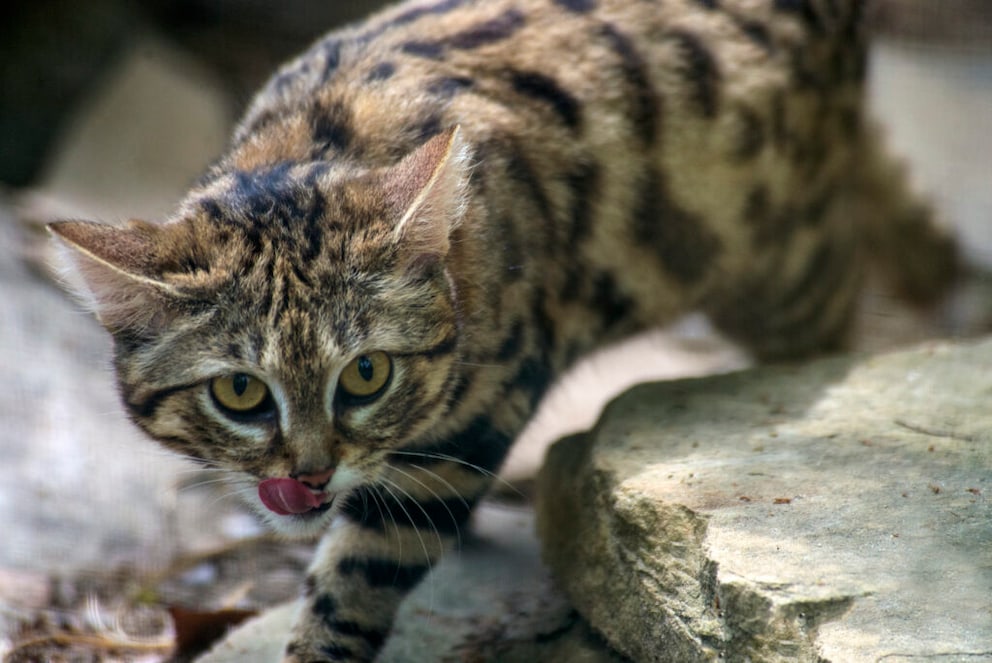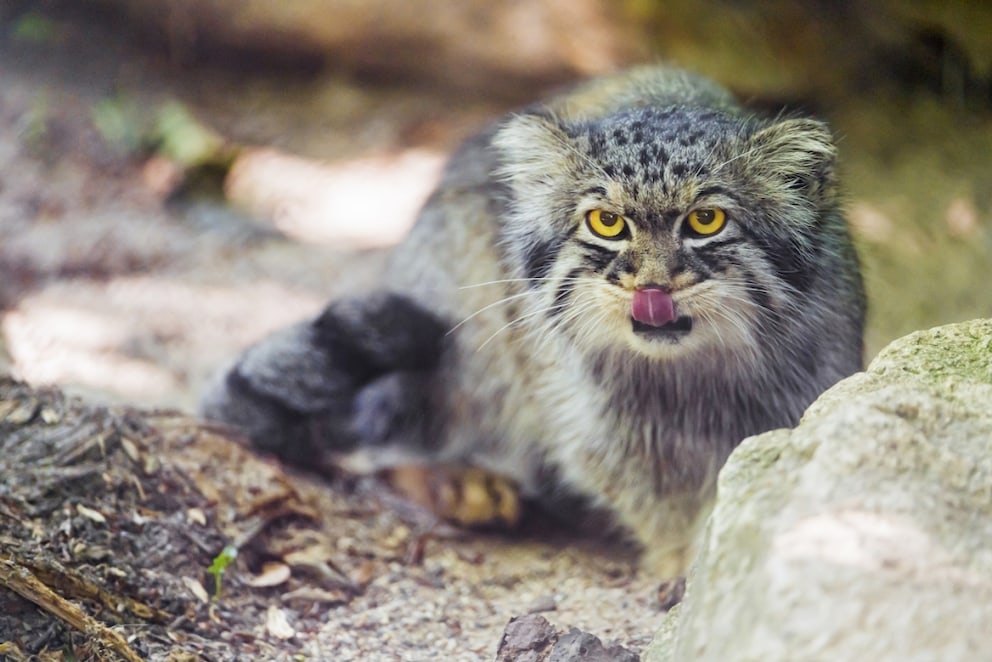June 11, 2024, 3:38 pm | Read time: 5 minutes
When people think of wildcats, they often picture tigers or lions. However, there are deadly hunters in miniature form as well. Some of them don’t even reach the size of our domestic cats. PETBOOK has embarked on a quest to find the smallest among them, which are no less fascinating than their larger relatives.
They look absolutely adorable, yet they are impressive hunters with unique traits. Mostly, they prowl silently on their own through the night. The black-footed cat prefers to hide in burrows during the day, while the rusty-spotted cat conceals itself in the forest thickets. All of them belong to the Felidae family, which is divided into big and small cats. It’s hard to believe these small cats would harm a fly, but they are ruthless hunters. Like the black-footed cat, which according to the BBC, has a hunting success rate of 60 percent. In comparison, the cheetah, the fastest of all big cats, has only 40 percent. PETBOOK reveals which wild cats are among the smallest in the world.
The Black-Footed Cat

It is one of the smallest wild cats in the world and the smallest in Africa. Its habitat is in the arid zones of Namibia, Botswana, and South Africa. During the day, the cat, measuring about 36 to 43 centimeters (head and body), hides in abandoned burrows of various animals, such as aardvarks, which it often expands as a diligent digger. Interestingly, unlike our house cats, it digs and scratches with both paws.
The name black-footed cat (Felis nigripes) is somewhat misleading, as the small hunter only has black pads and the undersides of its paws. The tops of the paws are light brown. Its fur is ochre-yellow and covered with large black spots. Its head, with its large eyes, appears somewhat oversized. 1
At night, the black-footed cat goes hunting and catches prey about every 50 minutes on its 8 to 10-kilometer-long forays, including mice, birds, but also spiders and insects. Sometimes it also takes down Cape hares or young goats, which are heavier than itself. During the hunt, its ears are constantly moving. Once it detects a sound, it sneaks as close as possible to its victim. The last few meters, it sprints, grabs the prey with its paws, and bites into the neck.
The small wild cat primarily obtains its fluids from its prey and is therefore not dependent on water sources in the dry areas it inhabits. Usually, the wild cat, classified as “threatened” by the International Union for Conservation of Nature and Natural Resources (IUCN), has two young per year and lives about five years in the wild. In captivity, the animals have reached an age of up to 13 years. 2
Why the black-footed cat is the deadliest wild cat in the world
The Rusty-Spotted Cat

It is the smallest wild cat in India, living in the southern part of the subcontinent and also found in the forests of Sri Lanka. The rusty-spotted cat (Prionailurus rubiginosus), like the black-footed cat, is between 35 to 48 centimeters long (head and body) and resembles the Bengal cat, but its spots appear washed out and not as clearly defined.
The small hunters live both in the rainforest and in open grasslands, and have even been spotted on tea plantations. As a small cat, it also likes to hide under the cover of darkness. Then the solitary hunter goes on the prowl. The diet of this wild cat, which is among the smallest in the world, includes mice, birds, insects, and frogs.
The rusty-spotted cat, which usually has only one young per year, is also classified as “threatened” by the IUCN, is strictly protected, and trade is prohibited. The animals are primarily threatened by deforestation and the resulting loss of their habitat. According to the Zootierliste, they can be found in Germany at the Zoological Garden in Berlin, in Frankfurt/Main, and in other locations. 3
The Sand Cat
This wild cat, also one of the smallest in the world, is known as the desert cat. It is native to the Sahara, as well as Arabia, Central Asia, and Pakistan. Measuring around 45 to 55 centimeters, the sand cat (Felis margarita) can be slightly larger than the black-footed and rusty-spotted cats. However, it is still smaller than our house cat. Its sand-colored fur, with a white patch on its chest and throat, is distinctive. An orange stripe runs across its face from the eyes over the cheeks. It has a few dark stripes on its body and legs.
The sand cat’s paws are protected from heat and cold by wiry and matted tufts of hair. This prevents it from sinking into the sand, allowing it to reach speeds of up to 40 km/h. This desert cat is also a solitary nocturnal hunter. It has excellent hearing and smell, and can see well in the dark, like house cats. In addition to the usual mice, lizards, birds, and insects, it also hunts mole voles and snakes, which it kills with a neck bite. As a desert animal, it requires little water and typically has three young per year. According to the IUCN, it is no longer considered endangered.

Test Your Knowledge in the Ultimate Wildcat Quiz! How Many Questions Can You Answer?

Hardly anyone knows these 16 wild cats

What Makes the Little-Known Pallas’s Cat So Unique
Pallas’s Cat

With a body length of up to 60 centimeters, the Pallas’s cat (Otocolobus manul) – known to many as the manul – is also among the smallest wild cats in the world. It is about the size of a house cat and lives in Central Asia, found at altitudes of over 3,000 meters. Its dense fur protects the small cat from the weather and makes its stocky body appear larger than it actually is.
Like many of its relatives, Pallas’s cats are nocturnal hunters and solitary creatures. Their prey includes mice and chicks, as well as larger animals like partridges and pikas. Their unique appearance, which makes the Pallas’s cat an interesting exotic pet, is also a factor. However, animals kept in captivity often die within a few weeks from infections, as their immune system is relatively weak. 4

